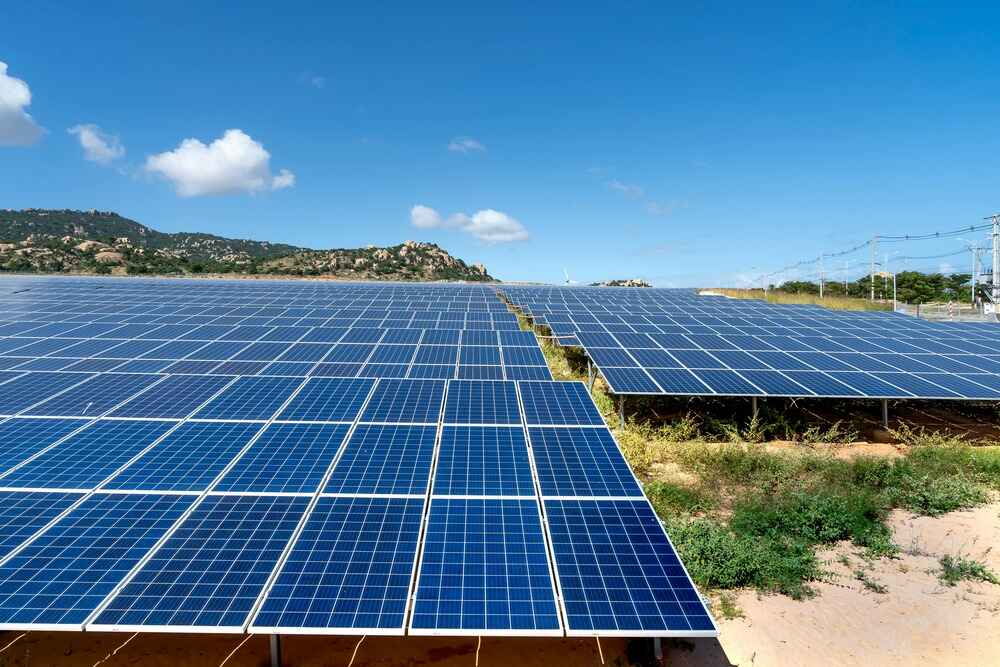
Table of Contents
- The Shift Toward Smart Solar Systems
- AI in Solar System Design
- IoT: Connecting Every Element of the Solar Ecosystem
- How AI + IoT Are Shaping the Future of Solar Design
- Southvine Energy’s Approach to Smart Solar Design
- Conclusion
The solar industry is evolving faster than ever — and at the center of this transformation are two powerful technologies: Artificial Intelligence (AI) and the Internet of Things (IoT).
Together, these innovations are redefining how solar systems are designed, monitored, and optimized — enabling smarter, more efficient, and more sustainable energy solutions.
In this blog, we’ll explore how AI and IoT are shaping the future of solar system design, and why companies like Southvine Energy are embracing these technologies to deliver intelligent solar design services.
1. The Shift Toward Smart Solar Systems
Traditional solar systems were designed based on static parameters like average sunlight, roof angle, and local weather patterns. However, these systems couldn’t adapt in real-time to changes in performance, shading, or user behavior.
Now, with AI and IoT integration, solar systems can analyze, predict, and self-optimize. They don’t just generate power — they think about how to generate it better.
This marks the beginning of the smart solar revolution — where every panel, inverter, and battery communicates with each other to create a truly intelligent energy network.
2. AI in Solar System Design
Artificial Intelligence is transforming the design and planning phase of solar projects. AI-powered tools analyze massive data sets to create more accurate, efficient, and cost-effective solar layouts.
Here’s how AI helps:
- Automated System Design:
AI-based software platforms can automatically generate optimal panel layouts, tilt angles, and inverter configurations within minutes — saving hours of manual design effort. - Energy Output Prediction:
Using machine learning models, AI predicts energy generation by analyzing real-time weather patterns, shading effects, and geographical data. This ensures more accurate performance forecasting. - Fault Detection and Diagnostics:
AI can identify irregular patterns in system performance and detect faults early, preventing downtime and increasing system lifespan. - Cost and ROI Optimization:
AI simulations help estimate installation costs, payback periods, and ROI — allowing homeowners and businesses to make smarter investment decisions.
At Southvine Energy, we leverage advanced design tools and AI-driven simulations to deliver data-backed, high-precision solar permit designs that meet both technical and regulatory standards.
3. IoT: Connecting Every Element of the Solar Ecosystem
The Internet of Things (IoT) connects solar panels, inverters, batteries, and monitoring systems through smart sensors and cloud-based platforms.
This connectivity allows real-time communication, data sharing, and remote management of solar assets.
IoT in solar design offers:
- Real-Time Monitoring:
IoT-enabled sensors collect live performance data such as voltage, current, temperature, and irradiance from each component. - Predictive Maintenance:
Instead of waiting for a failure, IoT systems alert operators before a potential issue arises — improving uptime and reliability. - Smart Energy Management:
IoT-based controllers can automatically adjust power flow between solar, battery, and grid — optimizing energy use throughout the day. - Remote Control:
System owners can monitor and control their solar systems from anywhere through smartphone apps or dashboards.
Together, AI and IoT create a closed feedback loop — where data gathered by IoT devices is analyzed by AI to continuously improve design and performance.
4. How AI + IoT Are Shaping the Future of Solar Design
The future of solar system design will be fully digital and data-driven, where design, operation, and maintenance are seamlessly interconnected.
Some future trends include:
- Self-Optimizing Solar Systems:
Panels that adjust their orientation and output dynamically based on sunlight and load demand. - AI-Driven Predictive Design:
Systems that automatically refine design blueprints by learning from past project data. - Grid-Interactive Systems:
Smart inverters that communicate with local grids to balance energy supply and demand in real time. - Autonomous Maintenance:
AI-powered drones and robots that inspect and clean panels based on IoT sensor alerts.
This digital transformation not only improves efficiency but also supports global sustainability goals by making solar energy more accessible, affordable, and scalable.
5. Southvine Energy’s Approach to Smart Solar Design
At Southvine Energy, we believe that the future of solar design lies in technology-led precision and intelligence.
Our approach combines advanced CAD tools, AI-based modeling, and smart data integration to:
- Create optimized and code-compliant solar permit designs
- Ensure faster approvals and reduced installation delays
- Deliver designs ready for IoT-based monitoring and automation
- Support solar + storage + EV-ready systems for future expansion
By merging innovation with engineering accuracy, we help our partners stay ahead in the fast-evolving renewable energy landscape.
Conclusion
AI and IoT are no longer futuristic concepts — they are the driving forces behind the next generation of smart solar systems.
From automated design to real-time energy optimization, these technologies are making solar power smarter, cleaner, and more efficient than ever before.
At Southvine Energy, we’re proud to lead this transformation by providing intelligent solar permit design solutions that align with the future of energy.
Power your next solar project with smart design expertise.
Visit southvineen.com to explore how our AI-ready solar design services can bring your vision to life.


